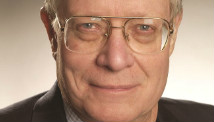TOKYO (Reuters) - Asian shares fell on Thursday in choppy trade, as positive Chinese manufacturing data was eclipsed by North Korea threatening a nuclear test and on below-view results from Apple Inc .
"Markets see a global economic recovery trend but there is no consensus on the strength of growth, capping many markets. Equities have been clearly benefiting from accommodative monetary conditions," said Koichiro Kamei, managing director at financial research firm Market Strategy Institute.
China's HSBC flash purchasing managers' index (PMI) rose to 51.9 in January to a two-year high, signaling a rebound in manufacturing activity and confirming a recovery in the world's second largest economy was on track.
However, while the data briefly spurred markets higher, geopolitical uncertainty on the Korean peninsula and Apple's disappointing earnings dented overall demand.
The MSCI's broadest index of Asia-Pacific shares outside Japan <.miapj0000pus> was down 0.4 percent after rising as much as 0.2 percent earlier. The index briefly touched a fresh 17-1/2-month high the day before, exposing many bourses to profit taking pressures ahead of the regional earnings season set to start in earnest later this month.
The pan-Asia index's technology sector <.miapjit00pus> and the region's Apple suppliers fell after the world's largest technology company missed revenue forecast for the third straight quarter after iPhone sales undershot expectations, sending its shares down over 10 percent in after-hours trading.
A sharp drop in Apple's component suppliers such as South Korea's LG Display and Taiwan's Hon Hai dragged South Korean shares <.ks11> down 0.9 percent and Taiwan stocks <.twii> down 0.6 percent.
China shares <.ssec> surrendered strong early gains, weighing on Hong Kong <.hsi>, after North Korea said it would carry out a nuclear test that would target the United States, dramatically stepping up its threats against a country it called its "sworn enemy".
Bucking the trend, Australian shares rose 0.5 percent <.axjo> to a fresh 21-month high after reversing morning losses after the data from China, Australia's top export market.
The data also helped push Japan's Nikkei stock average <.n225> up 1.3 percent, as firms with high exposure to the Chinese economy notching up gains. Most Japanese suppliers to Apple also recouped earlier losses.
"The underlying tone is still bullish, so even bad news about Apple or whatever doesn't hit stocks too hard," said Masato Futoi, head of cash equity trading at Tokai Tokyo Securities, adding that three days of losses spurred dip-buying. <.t/>
European markets are seen easing, with financial spread-betters predicting London's FTSE 100 <.ftse>, Paris's CAC-40 <.fchi> and Frankfurt's DAX <.gdaxi> would open down as much as 0.1 percent. U.S. stock futures were down 0.3 percent, pointing to a softer Wall Street start. <.l><.eu><.n/>
YEN BUYING HALTED
The two-day yen buying spree came to a pause. The currency's recent rebound came after the Bank of Japan's latest policy easing steps on Tuesday failed to provide immediate stimulus as expected by some investors. The BOJ pledged to achieve a 2 percent inflation target and promised to start open-ended asset buying from 2014.
The dollar rose 0.8 percent to 89.33 yen while the euro also advanced 0.8 percent to 118.93 yen. The yen is still down 12 percent from its mid-November levels, when markets began pricing in strong monetary accommodation from the BOJ.
Many market players believe the yen's weakness will persist due to widespread expectations the BOJ will continue pursuing aggressive monetary easing policies to beat the country's stubborn deflation.
"I think we will struggle to break 91, but I will still keep looking for us to trade above 90 in the short-term," said Jesper Bargmann, Asia head of G11 spot FX for RBS in Singapore, referring to the outlook for the dollar versus the yen over the next week or so.
Data on Thursday confirming a deteriorating Japanese trade balance also encouraged yen selling, traders said. Japan logged a record annual trade deficit in 2012.
Investors were aalso reminded of the challenges facing the global economy on Wednesday when the International Monetary Fund predicted that an unexpectedly stubborn euro zone recession and weakness in Japan will hurt world growth. A Reuters poll also showed Asian economies will see weaker growth this year despite expected policy easing by central banks.
U.S. crude rose 0.4 percent at $95.57 a barrel while Brent steadied at $112.78.
London copper was down 0.3 percent at $8.076 a tonne and spot gold fell 0.4 percent to $1,678.81 an ounce, slipping from a recent one-month high.
(Additional reporting by Sophie Knight in Tokyo and Masayuki Kitano in Singapore; Editing by Shri Navaratnam)

